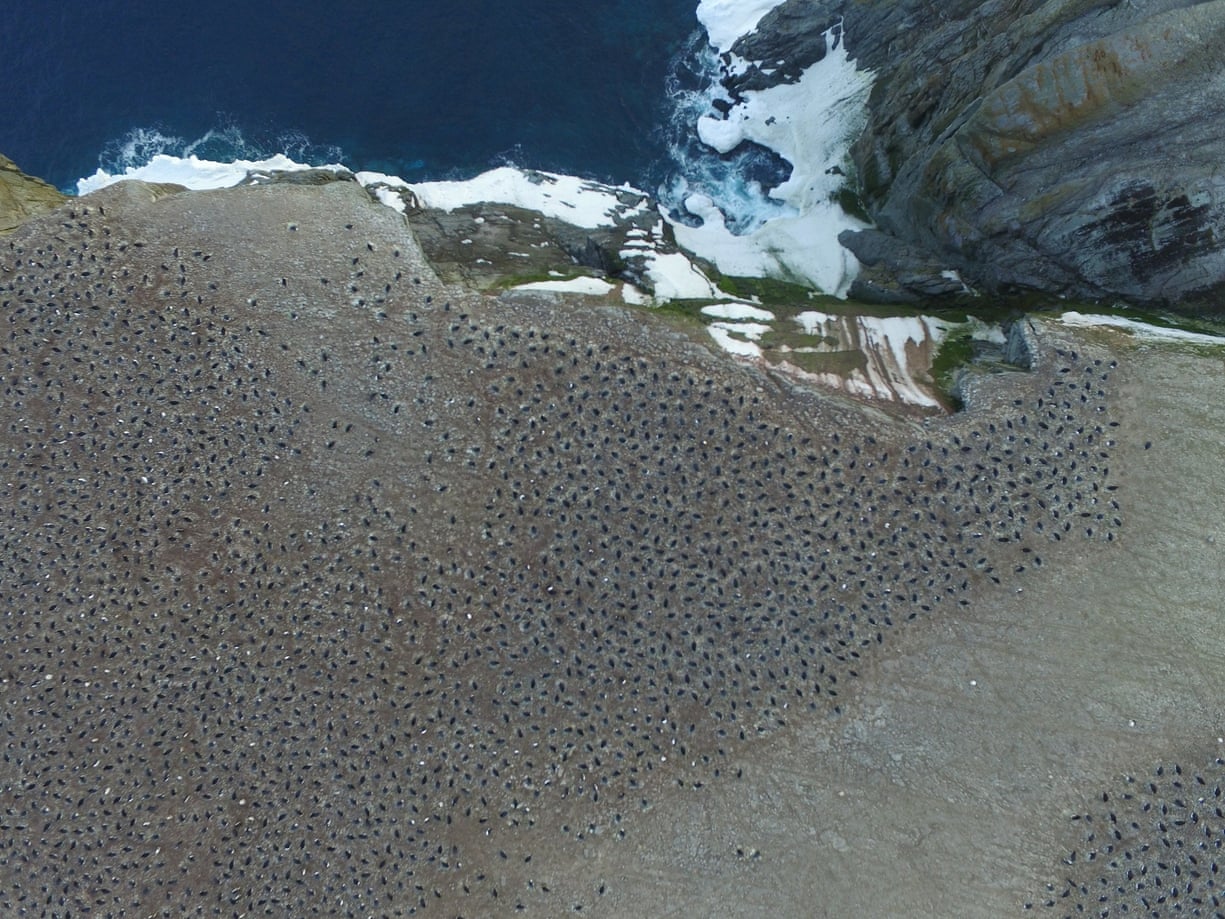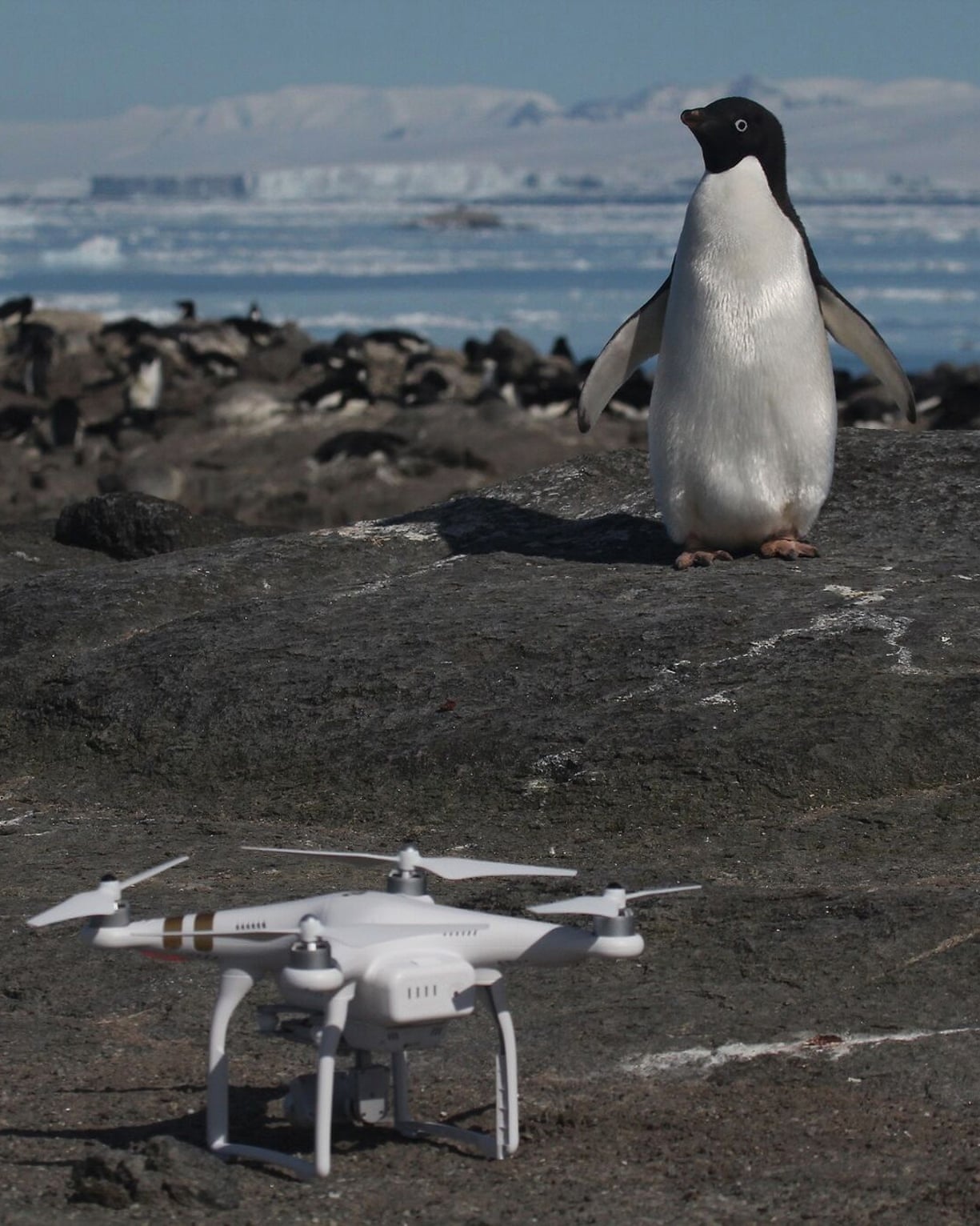Huge 'mega-colonies' of penguins have been discovered near the Antarctic peninsula, hosting more than 1.5m birds.
Researchers say it shows the area is a vital refuge from climate change and human activities and should be protected by a vast new marine wildlife reserve currently under consideration.
The Adélie penguins were discovered on the Danger Islands in the Weddell Sea, on the east side of the Antarctic peninsula
From The Guardian by Damian Carrington
The discovery shows the remote area is a vital refuge for wildlife from climate change and overfishing and should be protected by a new reserve, say scientists
Huge “mega-colonies” of penguins have been discovered near the Antarctic peninsula, hosting more than 1.5 million birds.
Researchers say it shows the area is a vital refuge from climate change and human activities and should be protected by a vast new marine wildlife reserve currently under consideration.
Danger islands near the Antarctic peninsula with the GeoGarage platform (UKHO map)
Danger islands detailed from NGA chart in the GeoGarage platform
The huge numbers of Adélie penguins were found on the Danger Islands in the Weddell Sea, on the east side of the Antarctic Peninsula.
It is a difficult place to reach and has seldom been visited.
But scientists, prompted by satellite images, mounted an expedition and used on-the-ground counts and aerial photography from drones to reveal 751,527 pairs of penguins.
Aerial footage revealed an enormous breeding colony of Adélie penguins
in the Danger Islands. Photograph: Thomas Sayre-McCord/WHOI/MIT
The researchers then examined satellite images going back to 1959 and believe the colony has been stable over that time.
In contrast, Adélie colonies to the west of the Antarctic Peninsula, where the impact of climate change and human activity are much greater, are in decline.
“This was an incredible experience, finding and counting so many penguins,” said Tom Hart, at the University of Oxford and part of the international research team.
Its report, Survey of Adélie Penguin Mega-colonies Reveals the Danger Islands as a Seabird Hotspot, is published in the journal Scientific Reports.
Michael Polito, at Louisiana State University and also part of the team, said: “I was amazed by the sheer number of Adélie penguins I saw.
The water around the island boiled with penguins.”
The researchers uses drone footage to calculate the number of penguins.
Photograph: Rachael Herman/Stony Brook University/Louisiana State University
Hart said: “The size of these colonies makes them regionally important and makes the case for expanding the proposed Weddell Sea Marine Protected Area (MPA) to include the Danger Islands. More than that, I think it highlights the need for better protection of the west Antarctic Peninsula, where we are seeing declines.”
Rod Downie, at WWF, said: “This exciting discovery shows us just how much more there still is to learn about this amazing and iconic species of the ice. But it also reinforces the urgency to protect Antarctic waters from the dual threats of overfishing and climate change.”
UAV orthomosaic image of Brash Island (above),
with examples of zoomed-in penguin rookeries (below)
The proposed MPA is huge – 1.8m sq km or five times the size of Germany.
It would ban all fishing in a vast area of the Weddell Sea and around the Antarctic Peninsula, safeguarding killer whales, leopard seals and blue whales, as well as penguins that rely on the krill targeted by fishing ships.
The MPA already has the support of several countries, including the UK, and will go before a conference of the Antarctic nations in October.
The discovery of the mega-colonies is a major development for polar scientists – and welcome good news.
In October, they reported that just two chicks had survived from a colony of 40,000 at Petrel Island, a few thousand kilometres west of the Antarctic peninsula.
Other penguins are also facing an uncertain future.
On Monday, researchers warned that king penguins could almost disappear from Antarctica by the end of the century unless climate change is curbed.
Links :
- BBC : Penguin super-colony spotted from space / As Oceans Warm, King Penguins’ Food Moves Farther Away. That’s a Problem
- The Independent : Previously unknown 'supercolony' of 1.5 million penguins discovered in Antarctica's remote Danger Islands
- News.au : Satellite discovers more than a million rare penguins in remote Antarctica
- NewsDeeply : Drones Help Find Massive Penguin Colonies Hiding in Plain Sight
- Nature : Multi-modal survey of Adélie penguin mega-colonies reveals the Danger Islands as a seabird hotspot
- Smithsonian : As Oceans Warm, King Penguins’ Food Moves Farther Away. That’s a Problem
- Phy : King penguins may be on the move very soon





No comments:
Post a Comment